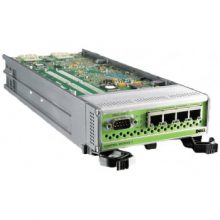
- #EQUALLOGIC PS6500 DISK MAP HOW TO#
- #EQUALLOGIC PS6500 DISK MAP INSTALL#
- #EQUALLOGIC PS6500 DISK MAP MANUAL#
- #EQUALLOGIC PS6500 DISK MAP VERIFICATION#
- #EQUALLOGIC PS6500 DISK MAP PC#
If some of the constituents are missing, add placeholders to indicate them using the corresponding tool from the toolbar. Open RAID Builder and assemble RAID 6 from its constituent drives.Ĭreate new RAID and add each of the drives to RAID in their right order.


#EQUALLOGIC PS6500 DISK MAP MANUAL#
Hint: If you have any difficulties with the installation of the utility, please refer to the installation manual for UFS Explorer Professional Recovery. All the attached disks will be presented in the left pane of the main window. Open the program with elevated privileges and modify its settings, if needed.
#EQUALLOGIC PS6500 DISK MAP INSTALL#
#EQUALLOGIC PS6500 DISK MAP PC#
Connect the available RAID 6 disks to the host computer.Īttach all the intact drives to the host PC watching their correct order.The following guide describes the specifics of the data recovery procedure for Dell's EqualLogic on the example of RAID 6: Still, like any complex SAN, Dell EqualLogic boxes have their peculiarities in virtual translation of address space of volumes as well as data distribution across the disks in RAID and these aspects must be taken into account during RAID reconstruction and further retrieval of lost information. Fortunately, UFS Explorer Professional Recovery incorporates special techniques that make it possible to deal with various RAID configurations implemented on Dell's EqualLogic Storage Arrays and restore the missing data from EqualLogic volumes. Yet, even with their excellent fault-tolerance capabilities, there are still challenges such arrays may be unable to cope with: administration mistakes, power outages, connection problems, data corruption, parity issues or failures during RAID rebuild operations lead to the loss of critical corporate files and the urgent need for their recovery. SAN storage solutions of Dell's EqualLogic family are recognized for their easy deployment, straightforward management and rock-solid reliability achieved through multiple safety features.
#EQUALLOGIC PS6500 DISK MAP HOW TO#
How to recover data from Dell EqualLogic with RAID 6
#EQUALLOGIC PS6500 DISK MAP VERIFICATION#
Notes: If you install a disk during an ongoing RAID reconstruction or verification operation, the new disk will not be configured until the operation completes. If you install another disk before 2 minutes have elapsed, the timer is restarted. If no other disks are installed, the disk is configured after a delay of 2 minutes. This time interval enables you to install multiple disks and configure all the disks simultaneously, which is more efficient than installing a single disk, configuring it, and then repeating the process.įor example, when you install a disk in an array, a timer starts.

When installing disks in an array, there is a two-minute delay between the time you insert a disk and the time the disk is automatically configured into a RAID set. For example, if an array has 250 GB and 400 GB disks, only 250 GB of space will be available on each disk. Although you can use disks with different sizes in an array, the smallest disk in the array will determine how much space is available.

Once you press the disk handle release button, wait 30 seconds before removing the disk. When not installed in an array, always protect a disk from electrostatic discharge. Always use electrostatic protection when handling disks. Always install a disk or a blank carrier. If you must remove a disk (for example, to install it in another array), remove a spare from a member that has two working spares if possible. Removing a disk that is an active member of a RAID set will be handled as a disk failure.


 0 kommentar(er)
0 kommentar(er)
